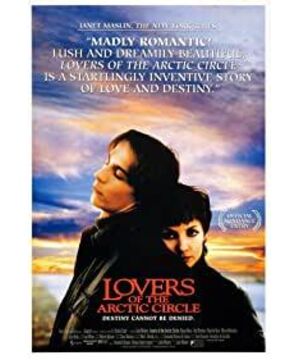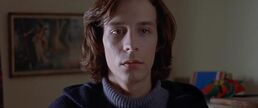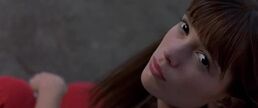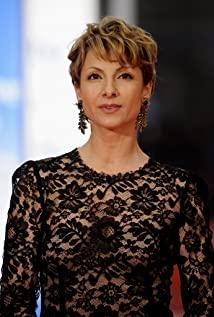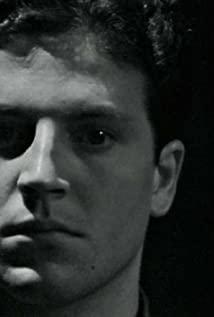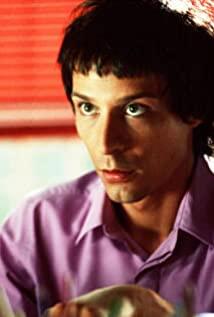Theme Interpretation: Eternity and Fate
I summarize the theme of this movie as a pair of precocious and innocent children's yearning for the "Arctic Circle" ("eternal love"), and the lament of fate. In this film, the source of the nominal love of the "brother and sister" is no longer the conventional "parents remarry and reorganize the family", but is treated as if it is through the traction of this pair of children. Their parents took them to form a family, which finally made them have affair, love, and separation at home after they grew up-until the moment before reunion, life and death were separated by a circle-like life experience. In the film, couples who have been separated for many years meet again in the Arctic Circle, but just before the meeting, Otto's car dodges and hits Anna. In a close-up, he is permanently frozen in her pupils. inside.
The yearning for the "Arctic Circle" was narrated by Ana, who was in her youth, and it symbolized the utopia in the hearts of the children in the film, and the extreme day and the sun never set, symbolizing the eternity they longed for. . The shape of the "polar circle" represents perfection, and this perfection is also a kind of restraint, just like the face of lover Otto surrounded by her round pupils before Anna's death-he is all she has. They are pursuing this "unique" until death: subconsciously demanding that they can only be loyal to one opposite sex in their life, that is, their father and mother. Anna's heart perfectly completed the unity of the image of her father and the image of her lover Otto, because at the moment of trance when she learned of her father's death, she met the childhood Otto, and at that moment Otto seemed to be her childhood father in her eyes. . But Otto has not been so lucky. The images of mother and lover are always contradictory and divided. After his parents divorced, he was immersed in passionate love and ignored his mother. Therefore, when his mother passed away alone, he could not face his inner regret. He left his lover Anna, who had been in love for many years, and finally caused a tragedy for the two. This kind of paranoia about "eternity" and "consummation" makes them imprisoned in their own cage after all.
Based on the above interpretation of the theme, let us explain the performance characteristics of the actors in the film.
Performance features-the alienation effect and the creation of a sense of fatalism
. Both Otto and Ana were a bit precocious in their childhood. However, precocious children will retain a naivety that is not easy for ordinary people when they become adults. Because their knowledge of the world often stays in a state of being ahead of children and lagging behind for adults. They stubbornly maintain this state of no beginning and no end, pessimistic and chaste, thinking that they can approach eternity.
The creation of a sense of fatalism as the theme of the film is inseparable from the "distance effect" created by the director. As Janetti mentioned in "Knowing the Movie", overhead shots of a large panorama can easily bring a sense of destiny to the audience. And this sense of destiny is caused by the "defamiliarization" effect (another term for "alienation effect") caused by visual distance. In this film, apart from the cool and psychedelic light and shadow, color, and the flexible and free lens movement, the alienation effect that causes the sense of fatalism depends more on the performance of the actors.
The four main characters in the film: Otto, Ana and their parents, no matter who will play the role (the two protagonists are played by two actors from childhood and adulthood), their expressions are always the same at several key plot points. Unusual, causing the alienation effect of the performance. These performances can be summarized as the following features.
1. Distorted and exaggerated:
When Ana's mother conveyed to Ana about her father's death, she was silent, wearing sunglasses, her expression distorted, and crying hypocritically. This kind of hypocrisy brings an out-of-date sense of humor and embarrassment, but it creates a "distinction effect" that prevents the audience from "involving in the play", but examines their destiny.
The most typical is the moment Ana was hit to death. In the panorama, she slid back stiffly all over her body, and this posture brought a sense of comicality. Death has not been dealt with solemnly and tragically. In the close-up of the face showing her dying moment, her eyes are as round as a doll, and the hands beside her face show a delicate arc. Such a distortion effect that seems to have been deliberately dressed up has also reached the "interval". The purpose of "Li" conveys the feeling of being teased by fate.
2. "Performance without performance":
In the scene where Ana and Otto first met, Ana who fell down looked at her destined lover. Regarding Ana's expression, the duration of the shot was not short, but Ana had no expression other than looking straight.
While Ana was not sure about Otto's life or death and was on the way to investigate, her face was also expressionless. There is no anxiety, no sorrow.
When Otto saw Ana hit and died in front of the red bus, he didn't have any more expressions except doubt. The long shots he left in Ana's pupils showed an expressionless prying.
This kind of expressionlessness for a long time made the audience's long wait without any results. This "unexpected" kind of "unexpected" gave the performance a distancing effect, and also reminded the audience that it is more emotional than life. The sorrows and joys of the film, what the film wants to express is a calm understanding of fate.
3. Out of focus eyes:
Another way of conveying fate. The main character's gaze is almost never focused on a clear thing, and always maintains a seemingly non-seeing relationship with the object he (she) is looking at. This kind of out-of-focus eyes represents the protagonists' dedication to true love and eternity-their pursuit is not originally in this world, so their eyes will inevitably not be able to focus on the real things in the world.
4. Continuous narration: Contrary to the sense of situation brought by music that is synchronized with sound and picture, narration is an effective way to cause defamiliarization. The characters and the theme of the scene become the scrutiny of the scene, constantly conveying their own judgments, feelings and fantasies. The audience seems to have acquired mind-reading skills at this moment, and this kind of strange pleasure makes them the second-most scrutiny of the role. At the same time, in many plot points, the narration supplemented the meaning of the white line-like performance.
These features ensure the film's "distance effect" at the key plot points-the major turning points of fate, thereby realizing the creation of a "fatality". This mysterious feeling of fate is as if the character in the film is in the silent Arctic Circle, facing the picture of his own destiny and sighing. And this image brings us unspeakable transcendental feelings, and we can't help but lament that "the poor body is the one in the eyes".
View more about Lovers of the Arctic Circle reviews


